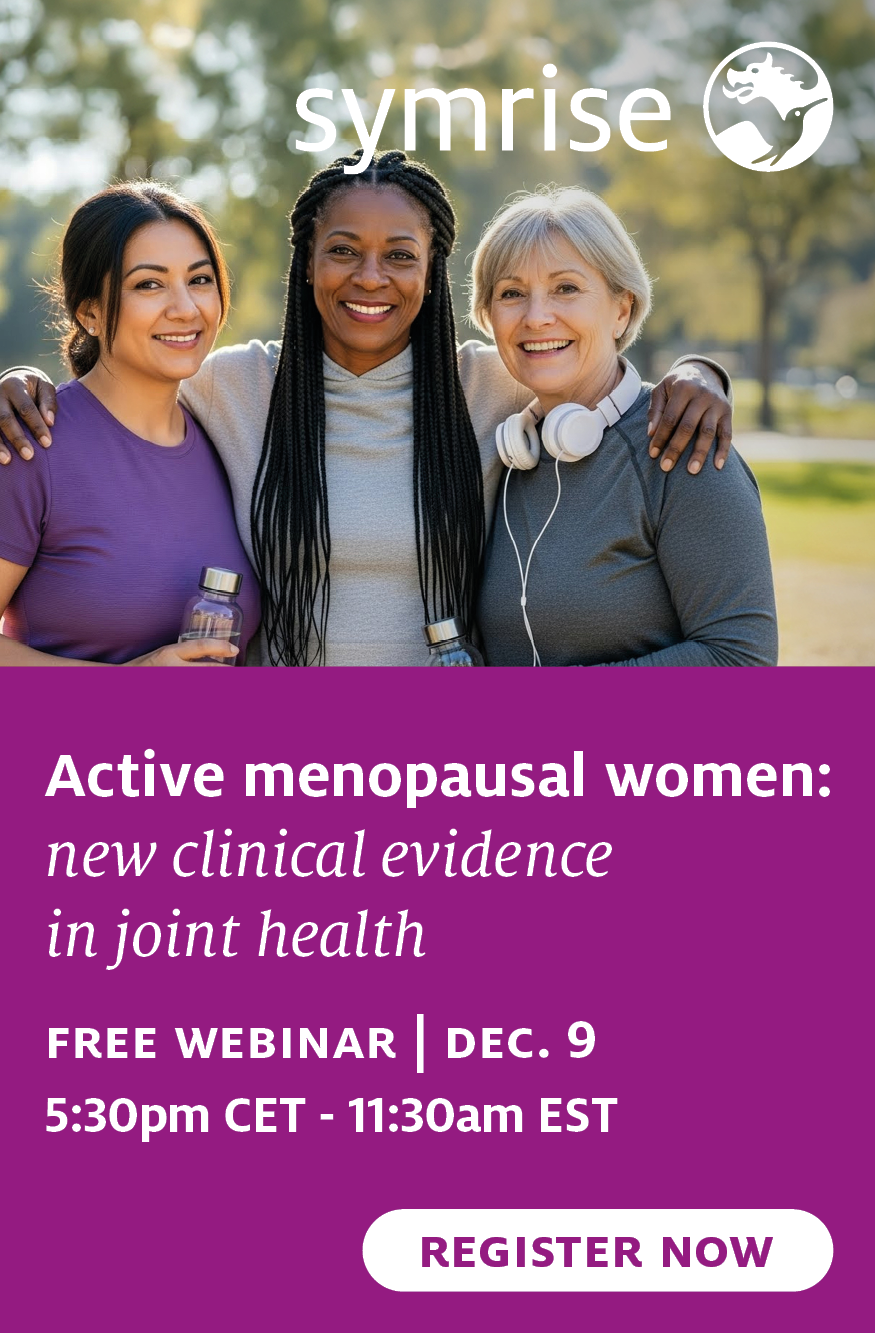
- Industry news
Industry news
- Category news
- Reports
- Key trends
- Multimedia
Multimedia
- Journal
- Events
- Suppliers
Suppliers
- Home
- Industry news
Industry news
- Category news
- Reports
- Key trends
- Multimedia
Multimedia
- Events
- Suppliers
Suppliers
Dietary Guidelines Advisory Committee Submits Recommended Guidelines

20 Feb 2015 --- The 2015 Dietary Guidelines Advisory Committee, a group of prestigious outside experts, submitted its recommendations to Health and Human Services (HHS) Secretary Sylvia M. Burwell and Agriculture Secretary Tom Vilsack, in order to inform the 2015 edition of the Dietary Guidelines for Americans.
The Secretaries have released the advisory committee’s recommendations report online, making it available for public review and comment. HHS and the US Department of Agriculture (USDA) will consider this report, along with input from other federal agencies and comments from the public as they develop the Dietary Guidelines for Americans, 2015, to be released later this year.

The 14 outside experts who made up the 2015 Dietary Guidelines Advisory Committee are nationally recognized in the fields of nutrition, medicine and public health. The committee held seven public meetings over the past two years. The recommendations of the 2015 Dietary Guidelines Advisory Committee are non-binding and advisory to HHS and USDA as they draft the Dietary Guidelines for Americans, 2015.
An overarching premise of the DGAC is that that the Dietary Guidelines for Americans should provide food-based guidance for obtaining the nutrients needed for optimal reproductive health, growth and development, healthy aging, and well-being across the lifespan (ages 2 years and older). Specific nutrient intake requirements are established for each sex and life-stage group by the Food and Nutrition Board of the Institute of Medicine and as such, the DGAC report did not re-evaluate IOM recommendations or make independent specific nutrient recommendations. Rather, the DGAC reviewed nutrient intake and biochemical measures of nutritional status and potential nutrient-related health outcomes to identify “shortfall nutrients” and “overconsumed nutrients”, and then determined whether these nutrients should be designated as “nutrients of public health concern.”
Nutrient intake data from a representative sample of the US population ages 2 years and older indicate that: vitamin A, vitamin D, vitamin E, folate, vitamin C, calcium, and magnesium are underconsumed relative to the EAR. Iron is under-consumed by adolescent and premenopausal females, including women who are pregnant. Potassium and fibre are underconsumed relative to the AI. Sodium and saturated fat are overconsumed relative to the UL or other standards for maximal intake.
Highlights of the guidelines include:
• The advisory committee has found that the US population should increase consumption of foods rich in vitamin A, vitamin D, vitamin E, folate, vitamin C, calcium, and magnesium.
• Adolescent and premenopausal females should increase consumption of foods rich in iron. Heme iron from lean meats is highly bioavailable, hence, an excellent source.
• A diet emphasizing a variety of nutrient-dense foods will help shift consumption toward the recommended intake levels of these shortfall nutrients.
• The US population should increase consumption of foods rich in potassium and fiber. A diet emphasizing a variety of nutrient-dense foods will help ensure optimal intake of these shortfall nutrients.
• In particular, fruit, vegetables and whole grains are excellent sources of vitamin A, C, folate, fibre, magnesium and potassium.
• The US population should make concerted and focused efforts to decrease consumption of sodium and saturated fat.
• Sodium: In excess, sodium is associated with several adverse health events, particularly hypertension. Current sodium intakes of the US population far exceed the UL for all age and sex groups. Due to the critical link of sodium intake to health and that intake exceed recommendations, sodium was designated as a nutrient of public health concern for overconsumption across the entire US population.
• Saturated fat: The DGAC concurred with the AHA/ACC report that saturated fat intake exceeds current recommendations in the United States and that lower levels of consumption would further reduce the population level risk of CVD. A large majority (71 percent) of the total population consumed more than 10 percent of calories from saturated fat, with a range by age group from 57 percent to 92 percent. Further, 65 percent to 69 percent of the age groups at highest risk of CVD (males and females older than age 50 years) had intakes more than 10 percent of total calories were from saturated fat. Saturated fat is still a nutrient of concern for overconsumption, particularly for those older than the age of 50 years.
• Cholesterol: Previously, the Dietary Guidelines for Americans recommended that cholesterol intake be limited to no more than 300 mg/day. The 2015 DGAC will not bring forward this recommendation because available evidence shows no appreciable relationship between consumption of dietary cholesterol and serum cholesterol, consistent with the conclusions of the AHA/ACC report. Cholesterol is not a nutrient of concern for overconsumption.
• Within the Dairy and Vegetable groups, the following dietary changes in particular will help increase intake of shortfall nutrients and will decrease intake of overconsumed nutrients by the US population:
• Increasing low-fat/fat-free fluid milk and yogurt and decreasing cheese would result in higher intakes of magnesium, potassium, vitamin A, and vitamin D while simultaneously decreasing the intake of sodium and saturated fat.
• Replacing soft drinks and other sugar-sweetened beverages (including sports drinks) with non-fat fluid milk would substantially reduce added sugars and empty calories and increase the intake of shortfall nutrients, including calcium, vitamin D, and magnesium.
• Consuming all vegetables, including starchy vegetables, with minimal additions of salt and solid fat will help minimize intake of overconsumed nutrients – sodium and saturated fat.
• Solid fats and added sugars are not food groups on their own, as are protein foods, dairy, grains, fruits, and vegetables, but they are included in the Food Patterns because they are an integral component of many foods consumed by the US population either because they occur naturally (in the case of some solid fats) or they are added to foods,
• Because added sugars and solid fats are not nutrient dense and solid fats contribute to saturated fat intake, the USDA Food Patterns recommend that intake be limited.
• The guidance on the approximate amounts of solid fats and added sugars that can be part of a healthful diet is as follows: children ages 2 to 8 years: 120 calories/day; children 9 to 13 years: 120 to 250 calories/day; girls ages 14 to 18 years: 120 to 250 calories/day; boys ages 14 to 18: 160 to 330 calories/day; adult women: 120 to 250 calories/day; and adult men: 160 to 330 calories/day. Intake limits varies by age and sex and are based on residual calories after all food group intakes are met.
• The intake limits include solid fats and added sugars from all sources in the diet: from sugar in sugar-sweetened beverages, including coffee and tea, and breakfast cereals, to solid fats in burgers, sandwiches, and pizza, to the combination of solid fats and added sugars in snacks and desserts such as cookies, cakes, ice cream, and donuts.
In response to the 2015 US DGAC report, the American Beverage Association issued the following statement:
“We appreciate the work of the 2015 US Dietary Guidelines Advisory Committee, and agree that total diet and physical activity must be taken into consideration to achieve a healthy lifestyle.
“When it comes to sugar and sugar-sweetened beverages, the Committee did not consider the body of science. Numerous studies have shown that restricting one food or food group is not the best approach for achieving calorie balance or maintaining a healthy weight. Rather, focusing on an overall approach of reducing calories from all sources while increasing physical activity provides a comprehensive and long-term solution for doing so. As with any other source of calories, sugar-sweetened beverages can be part of an overall diet. Moderation and balance are key.
This Committee also went beyond its scope in examining the safety of low- and no-calorie sweeteners and caffeine, ingredients that have been repeatedly deemed safe by the US Food and Drug Administration for decades.
Moreover, given the importance of the Committee’s guidance on helping Americans control their weight, their lack of support for foods and beverages made with low- and no-calorie sweeteners is contradictory. The body of science clearly shows that these ingredients can be an effective tool in weight loss, weight management and management of health conditions such as diabetes and hypertension.
Our industry strongly believes that the 2015 Dietary Guidelines for Americans should be based on the weight of scientific evidence while also providing real world guidance that is achievable for the majority of Americans. In reviewing the Committee’s recommendations, we encourage the Agencies to seek ways to help Americans achieve balance and moderation in their diet - while also promoting the importance of physical activity, rather than advocating for restricting only specific items and eliminating choice.”












